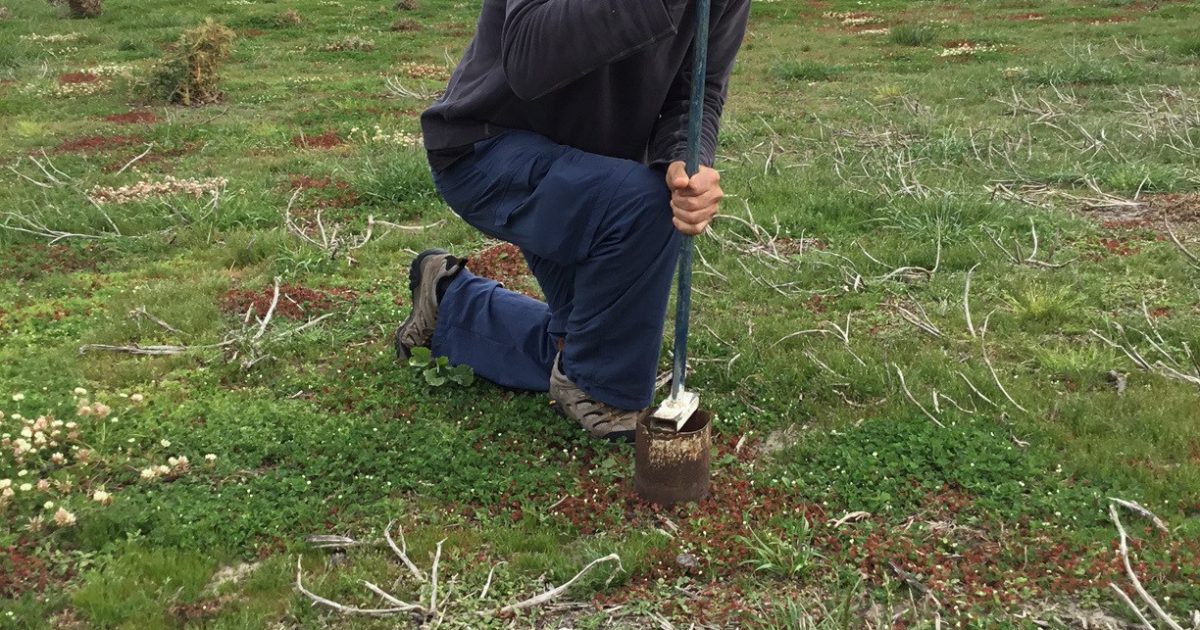Researchers will be in paddocks later this month collecting samples to identify which plants are hosting a virus linked to subterranean clover red leaf syndrome.
The Department of Primary Industries and Regional Development and the University of Western Australia (UWA) will undertake the sampling program for soybean dwarf virus.
It is part of a broader project also funded by Meat and Livestock Australia and Australian Wool Innovation to better understand the virus and its impact on sub clover.
A management package will be developed as part of the project to provide growers with advice on prevention and management strategies for future seasons.
Department research officer Paul Sanford and UWA researcher Kevin Foster are co-leading the work.
Department officers have been working with growers to examine the cause of sub clover red leaf syndrome last season where large patches or whole paddocks of clover turned red and died.
Mr Sanford said the syndrome had occurred in the central and southern agricultural areas of WA for decades but testing last season was initiated after severe losses occurring in some areas for the first time.
“The probable cause was identified as soybean dwarf virus, after the department’s laboratory tests revealed that 80 per cent of the plants with visual symptoms tested positive for the virus, compared to only two per cent of the plants that appeared healthy,” he said.
“We suspect other factors including environmental stress, time of infection and root diseases contribute to the severity of the syndrome.
“Soybean dwarf virus is not a seed borne virus but is spread by aphids. If we can control the aphids there is a good chance we can manage the syndrome.”
Mr Sanford said as part of the upcoming sampling program, plant and soil samples would be collected from up to 50 properties across the southern agricultural region.
“Sampling will focus on properties previously identified as having the syndrome in 2017, including an area from Brookton to Esperance, sites from the department’s green bridge survey and farmer and grower group properties identified through UWA research,” he said.
MLA WA Value Chain RD&A program manager David Beatty said this research followed extensive consultation with producers.
“Sub clover is still an incredibly important part of our pasture systems, which makes it so important to support livestock producers by finding both short-term and long-term solutions,” Dr Beatty said.
AWI on farm research and development general manager Jane Littlejohn also welcomed the collaboration.
“This is an example of where multiple organisations have listened to producers about a significant production issue, have worked together, combined resources and helped tackle a problem together,” Dr Littlejohn said.
Mr Sanford said soybean dwarf virus survived over summer in live plants such as summer weeds and native vegetation.
“It is likely that rainfall in summer which results in a green bridge that persists until autumn increases the risk of sub clover red leaf syndrome,” he said
“If we get further summer rain the risk this season will be higher.
“Growers may like to consider spraying for aphids using an anti-feeding insecticide at two and six weeks after sub clover seedlings emerge. This group of insecticides prevent aphids feeding and therefore, reduce the risk of virus infection.
“Oats can also be sown as a barrier around pasture paddocks to disperse aphids and slow early spread into pasture from outside sources.”
Growers whose properties are sampled as part of the summer sampling program will be provided with the test results and management advice.
Image: Department of Primary Industries and Regional Development officer Paul Sanford taking paddock samples in late 2017. Researchers will be in paddocks later this month collecting samples with the hope of identifying which plants are hosting a virus linked to sub clover red leaf syndrome.


